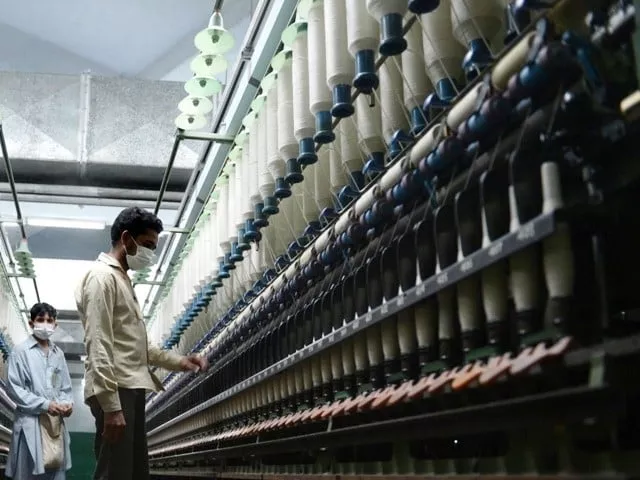LSM sector shrinks 10.2% in last fiscal year
Decline steeper than govt’s post-Covid-19 estimate
ISLAMABAD:For the second year in a row, Pakistan’s large-scale industrial sector shrank by 10.2% in the previous fiscal year, which was steeper than the post-Covid-19 estimate of the government, reported the Pakistan Bureau of Statistics (PBS) on Wednesday.
Large-scale manufacturing (LSM) output contracted 10.2% in fiscal year 2019-20 over the preceding fiscal year, according to the national data-collecting agency.
The contraction was sharper than the estimate of the Ministry of Finance that had projected a negative 7.8% growth in the LSM sector in the aftermath of coronavirus. On the basis of negative 7.8% growth, the Ministry of Finance had estimated an overall contraction of 0.4% in the economy in the last fiscal year that ended in June.
It was the second consecutive year when the LSM sector shrank, which was also the main contributor to employment generation after the agriculture sector. In fiscal year 2018-19, the LSM sector had contracted 2.6%.
The constant contraction in the LSM sector highlights the challenges to Pakistan’s economy, although the government has been trying to put the blame on the Covid-19 outbreak.
The government had closed most sectors of the economy in the third week of March while large industries had been facing problems for the past almost two years.
LSM contracted 7.7% in June 2020 alone over the same month a year ago, stated the national data-collecting agency. But the pace of decline was slower than previous months that showed a gradual recovery.
The government has lifted restrictions from this week and the economy is now functional, two months ahead of the initial estimate for revival of economic activities. It has made the new fiscal year’s budget on the assumption that economic activities will be fully restored in October.
On a month-on-month basis, LSM posted a positive growth of 16.8% in June 2020 over May due to better output in paper and board, rubber product, food, beverages, and pharmaceutical sectors. But almost all the other big industries faced contraction on a month-on-month basis too.
International financial institutions and independent economists have been making varying forecasts for chances of economic revival in the current fiscal year. The International Monetary Fund (IMF) has projected a nominal growth of 1% while the World Bank is forecasting contraction of over 2% in this fiscal year. The government has set the GDP growth target at 2.1% for the year.
PBS data showed that out of 15 major industries, being assessed by the PBS, only three recorded some growth while output in 12 industries shrank in fiscal year 2019-20.
Data collected by the Oil Companies Advisory Committee (OCAC) showed that 11 types of industries registered average negative growth of 1.2% in the last fiscal year. In June alone, the OCAC-monitored industries reported half-a-percentage-point negative growth on a year-on-year basis.
The Ministry of Industries and Production, which monitors 15 industries, reported a 7.4% decline in the growth of these industries in the previous fiscal year. In June 2020, the ministry reported a contraction of nearly 2% over the same month of last year. Similarly, the provincial bureaus reported a 1.5% contraction in 11 industries in the previous fiscal year. The provincial bureaus reported that these industries contracted 5.2% in June.
Sectors that posted growth in the previous fiscal year included fertiliser, which registered a growth of 4.4%, rubber products 2.9% and paper and board 2.3%.
The manufacturing of textile products dipped 10.4% in the last fiscal year. The food, beverages and tobacco sector saw a contraction of 2.7%, coke and petroleum products 20.1%, pharmaceuticals 4.4%, chemicals 7.8% and non-metallic minerals 2.2%.
The automobile sector registered a nearly 43.8% contraction in the last fiscal year. Output of iron and steel products shrank 17.4%, electronics 34.8%, leather products 9%, engineering products 18.7% and wood products about 44.2%. The coke and petroleum product sector dipped 20.1% in the previous fiscal year.
Published in The Express Tribune, August 13th, 2020.
Like Business on Facebook, follow @TribuneBiz on Twitter to stay informed and join in the conversation.


COMMENTS
Comments are moderated and generally will be posted if they are on-topic and not abusive.
For more information, please see our Comments FAQ